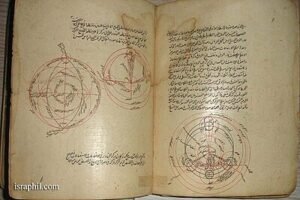Qutb al-Din al-Shirazi: The Mastermind of Astronomy and Philosophy

Qutb al-Din al-Shirazi (1236–1311) was a Persian polymath who made significant contributions to astronomy, optics, medicine, and philosophy. A student of Nasir al-Din al-Tusi, he played a key role in refining astronomical models and explaining the nature of rainbows. His works influenced both Islamic and European scholars, advancing scientific thought during the medieval period. Recognized for his interdisciplinary expertise, al-Shirazi’s legacy highlights the rich intellectual heritage of the Islamic Golden Age and its lasting impact on global knowledge.
Early Life and Education
Qutb al-Din al-Shirazi was born in 1236 in Shiraz, Persia, into a family of scholars. His early education was rooted in Islamic sciences, and he quickly developed an interest in medicine, philosophy, and astronomy. He studied under the renowned scholar Nasir al-Din al-Tusi at the Maragha Observatory, where he refined his knowledge of mathematics and celestial mechanics. His exposure to diverse scientific traditions helped shape his groundbreaking contributions to multiple disciplines, solidifying his place among medieval Islamic intellectuals.
Major Contributions
Qutb al-Din al-Shirazi’s impact on science and philosophy was profound. His major contributions include:
- Astronomy: He played a key role in refining the Maragha School’s astronomical models, challenging Ptolemaic theories of planetary motion. His work on the Ilkhanid Tables improved astronomical calculations, influencing later advancements in celestial mechanics.
- Optics and Light Theory: He conducted detailed studies on light refraction and was among the first to explain the formation of rainbows. His analysis expanded on Ibn al-Haytham’s optical theories, furthering the understanding of vision and light behavior.
- Medicine and Philosophy: He wrote extensively on medical treatments, compiling knowledge from earlier texts while integrating his own observations. His philosophical works bridged Aristotelian logic with Islamic thought, shaping intellectual discourse in the medieval Islamic world.

Legacy and Influence
Qutb al-Din al-Shirazi’s works were widely studied by later Islamic and European scholars, influencing the development of astronomy and optics. His refinements to planetary models and critiques of Ptolemaic astronomy laid the groundwork for future advancements in celestial mechanics.
His studies on light refraction and rainbows contributed to the evolution of optical science, impacting researchers in both the Islamic world and Renaissance Europe. His legacy endures in modern academic circles, where his contributions to science and philosophy are recognized as essential to the preservation and advancement of medieval scientific thought.
Conclusion
Qutb al-Din al-Shirazi’s groundbreaking contributions to astronomy, optics, and philosophy solidify his status as a key figure of the Islamic Golden Age. His refinements of astronomical models, studies on light refraction, and philosophical insights shaped scientific thought for centuries. Recognizing scholars like al-Shirazi highlights the rich intellectual heritage of the Muslim world and its influence on global knowledge. Continued research into historical Muslim scientists can deepen our understanding of their lasting impact on modern science and philosophy.



